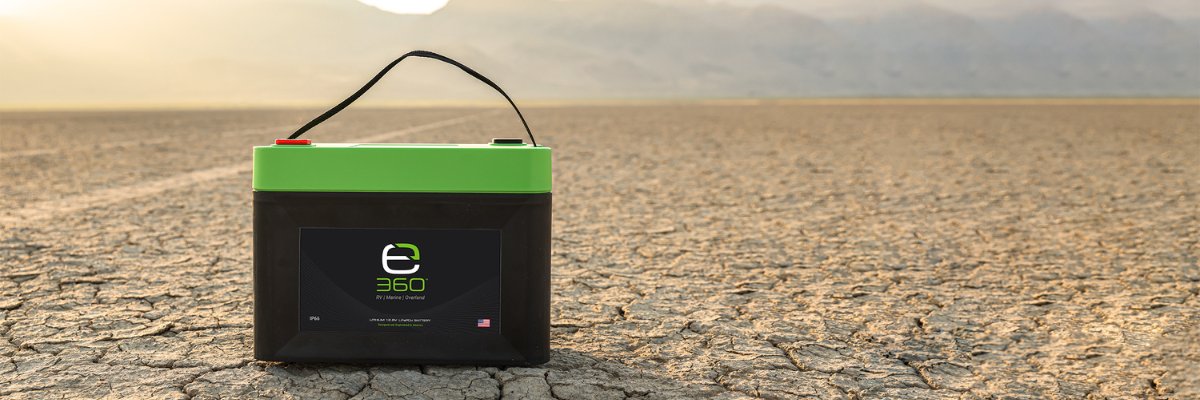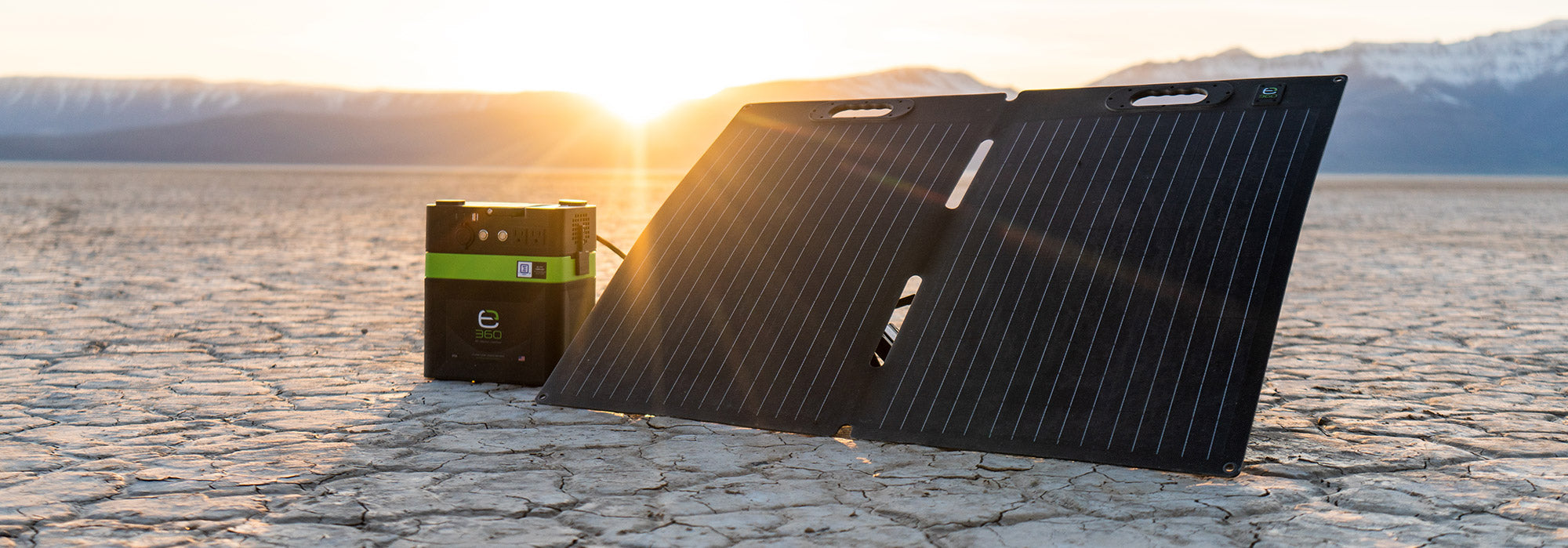The Science Behind E360's Lithium Iron Phosphate Batteries
Earlier this month, we compared lithium iron phosphate batteries to their more traditional (and less efficient) counterparts. Today, we’re breaking down the science behind these batteries—particularly the high-performing LiFePO4 cell. If you’ve been curious about Expion360’s superior safety and longevity and expertly engineered features, this blog’s for you.
The History Behind Lithium Iron Phosphate Batteries
If you’re here, we’d bet you’re probably data geeks like us. In other words, you like to know how things work—especially before making a big investment like a lithium battery. Before we get to the inner workings of our lithium iron phosphate batteries, a little history. Lithium formulas have been in mainstream use since about 1949 for things like power tools, electric vehicles, and e-bikes. In 1996, however, a team at the University of Texas discovered that phosphate was an optimum cathode material for rechargeable lithium batteries, which had, up to that point, a few limitations and safety concerns. The combination of lithium and phosphate equaled good electrochemical performance with low resistance.
This discovery revolutionized the industry as we knew it. It also revealed some incredible benefits that we still see in LiFePO4 batteries today:
- Higher current ratings
- Longer cycle life
- Thermal stability
- Increased safety
What is Lithium?
To understand its advancements—and use in E360 batteries today—it’s important to know the basics. Lithium’s major parts include a cathode (positive terminal on discharge), anode (negative terminal on discharge), and separators. The separators are porous layers soaked in electrolytes and used between the cathode and anode layers to keep them from shorting out but still allow electrochemical activity.
At Expion360, we use 26650 cylindrical cells with a special configuration in our internal battery packs. We’ve nicknamed it the “Jelly Roll” design for its four unique layers—anode, separator, cathode, and steel case—rolled up neatly like a jelly roll to conserve space in the cylindrical design.
Cell Build Theory
Another important takeaway is cell build theory. The anode and cathode are electrodes that establish electrical contact with a non-metallic medium on an electrical device. The current is either entering (anode) or exiting (cathode). During the discharge process, lithium ions transition from the anode to the cathode via the electrolyte (which, if you remember, is in the separator layer).
During this process, the anode goes through oxidation as electrons travel through the load. The cathode, on the other hand, undergoes reduction as electrons come in through the load. For charging, the pole process and polarities reverse.
There are three primary configurations of E360’s cells:
- Standard: 3.2 Vdc X 3400 mAh (milliamp hours)
- UL1642 recognized (file no. MH64383)
- High Density: 3.2 Vdc X 4000 mAh (20% more power)
- UL1642 recognized (file no. MH64383)
- Next-Gen Density: 3.2 Vdc X 4500 mAh (32% more power)
- UL1642 recognized (file no. MH64383)
Expion360’s Battery Build Breakdown
With lithium iron phosphate chemistry in mind, we set out to engineer best-in-class lithium batteries that could power adventure for longer and with more reliability and safety. Our batteries are built to last, a fact that’s noticeable in every feature—internal cells, internal wiring, cell insulation, exterior case, BMS, overall design & manufacturing control, and compliance & safety.
Let’s get to the battery breakdown.
Internal cells
The heart of Expion360 batteries is the lithium iron phosphate internal chemistry. The cells we use are only of the highest quality, with proven efficiency and performance.
Within every E360 battery, we compensate for the voltage required to achieve the desired capacity. For example, a 100 Ah battery would need 30 cells wired in parallel X 3.4 Ah to equal 102 Ah. Alternately, it would need four cell groups wired in series X 102 Ah to equal 102 Ah. To achieve nominal voltage for our 100 Ah batteries, the final configuration looks like four stacks of 30 cells wired in parallel or four stacks wired in series. This means you get exactly the power you need and expect when choosing Expion360 for your application.
Internal wiring
All internal connections are installed to operate beyond our 12-year warranty. The connections are all mechanical, not soldered, and are epoxy-sealed to ensure they maintain torque specifications. Our wiring is designed for balanced performance, safety, and efficiency.
Cell installation
As mentioned above, cells are configured in parallel wired stacks, eventually wired together in series. We weld the cells with thick, solid copper distribution plates to create these stacks. This robust and stable attachment method makes our product durable in even the harshest conditions.
Exterior case
In addition to the cell packs and wiring, our batteries are notable for their oversized brass terminals that we’ve symmetrically placed for series or parallel configurations. The case’s rubber feet help to reduce sliding and vibration, whereas the corners are rounded to maintain strength and reduce shock. The custom no-slip tie-down points further increase our battery case’s reliability and stability (regardless of the orientation you install it in for our Group 24 and Group 27 lithium batteries).
With a rugged fiberglass-infused ABS case compliant to UL 94V-0 fire resistance, we protect the most important assets of our batteries. Look at any of our battery spec sheets, and you’ll see the extensive electrical, mechanical, charge, discharge, temperature, and compliance parameters that back this up.
BMS
To ensure ongoing performance that measures up to our standards, we’ve designed a custom high-performance battery management system that protects the battery, owner, and overall investment. Our BMS can mitigate under and over-voltage issues, under and over-temp extremes, short-circuit events, auto reset capability, and more to keep your batteries safely performing for years.
Overall design and manufacturing control
Expion360 is proud to have complete control over all designs, modifications, and manufacturing processes. Every production and update decision happens from our Redmond, Oregon HQ.
Compliance and safety
Certainly not least, we have a proven safety track record that’s demonstrated by our impressive compliance ratings:
- UL 1642: Lithium cell standard that covers manufacturing, testing, and performance.
- UL 1973: Safety standard for all stationary and motive auxiliary power applications batteries.
- UL 94V-0: Safety standard for plastics flammability.
- UN 3480: Standard for safe lithium battery transport.
Built to Outlast
At Expion360, our lithium iron phosphate batteries are not just built to last; they’re built to outlast. At the core of each battery we engineer is a high-performance LiFePO4 cell, renowned for its superior safety and longevity. With proven safety standards, intelligent BMS, sleek and compact design, and usability across applications, E360 sets a new standard in energy storage.
For a visual explanation of this blog, watch the corresponding YouTube video on our channel.





